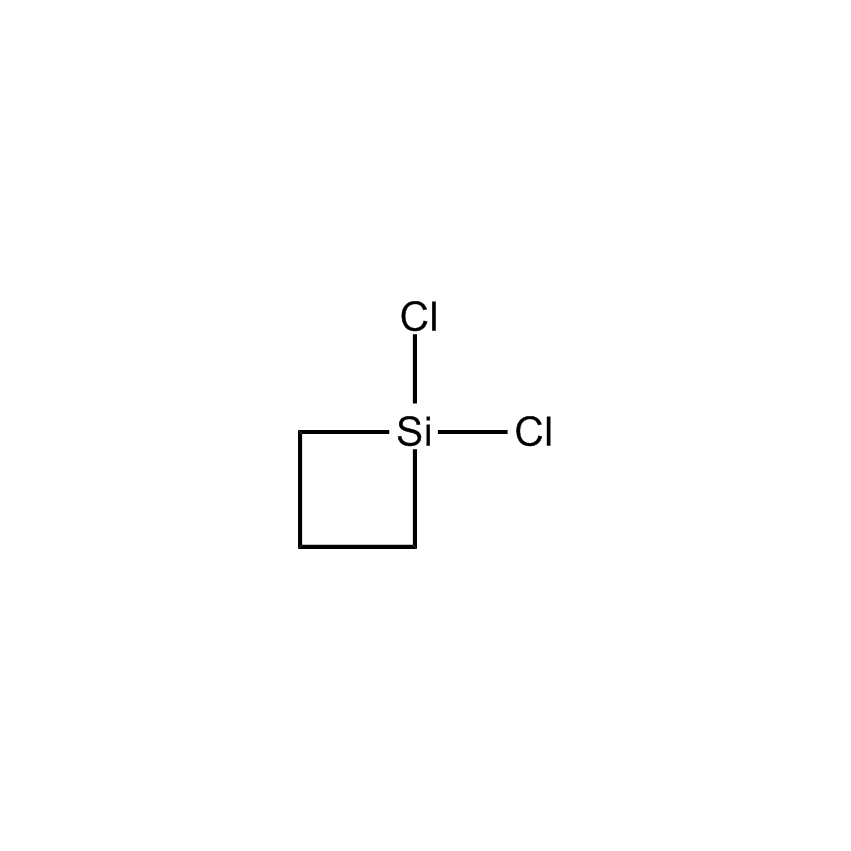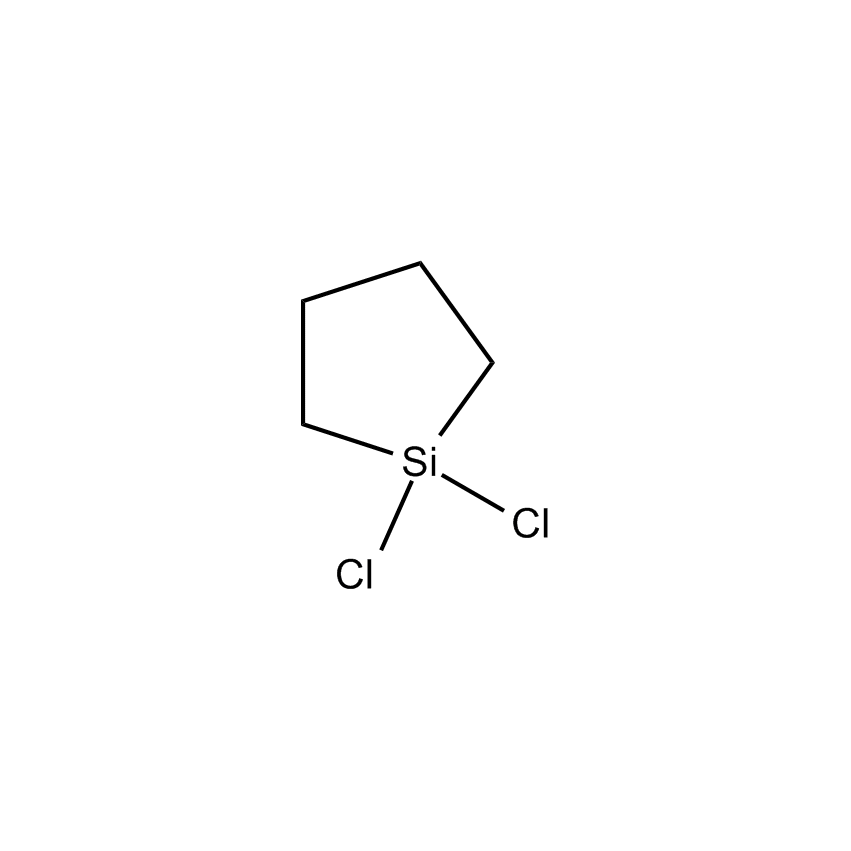Additional Properties
- Einecs Number 219-084-7
- Synonyms 1,1-DICHLOROSILACYCLOBUTANE
- HMIS 3-4-1-X
- Molecular Formula C3H6Cl2Si
- Molecular Weight (g/mol) 141.07
- Purity (%) 97%
- TSCA Yes
- Boiling Point (˚C/mmHg) 113-114
- Density (g/mL) 1.201
- Flash Point (˚C) 9 °C
- Refractive Index @ 20˚C 1.4620
Application
Reaction with LiN(iPr)2 and CH2X2 provides 1,1-dimethyl-2-halosilacyclopentanes.1
Arylchlorosilyl derivatives used in cross-coupling to biaryls.2
Vinylchlorosilyl derivatives used in cross-coupling to 1,3-butadienes.3
Starting material for spirocyclic organosilanes.4
Reference
1. Matsumoto, K. Tetrahedron 1993, 49, 8487.
2. Denmark, S. E.; Wu, Z. Org. Lett. 1999, 1, 1495.
3. Denmark, S. E.; Choi, J. Y. J. Am. Chem. Soc. 1999, 121, 5821.
4. Déjean, V. et al. Organometallics 2000, 19, 711.
Safety
Silane Cross-Coupling Agent
The cross-coupling reaction is a highly useful methodology for the formation of carbon-carbon bonds. It involves two reagents, with one typically being a suitable organometallic reagent - the nucleophile - and the other a suitable organic substrate, normally an unsaturated halide, tosylate or similar - the electrophile.
Cyclotrimethylenedichlorosilane; 1,1-Dichlorosilacyclobutane
Silicon Chemistry, Articles
Hatanaka and Hiyama first reported the palladium-catalyzed, fluoride-promoted reaction of aryl, alkenyl, allyl, and ethynyltrimethylsilanes with aryl, vinil and allyl halides to form the respective cross-coupled products


